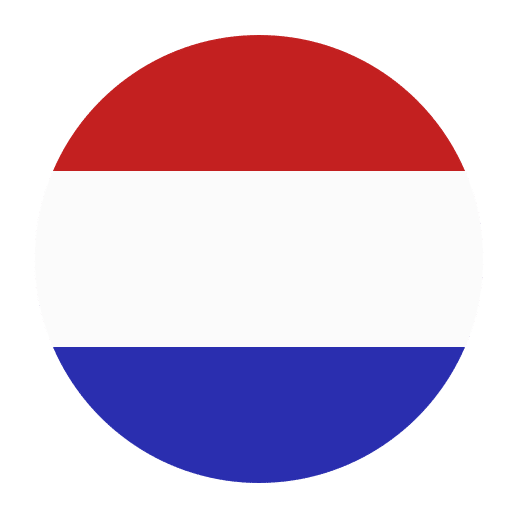Learning a new language can be an exciting and rewarding journey, and Dutch is no exception. One highly effective and enjoyable method to enhance your Dutch language skills is through music and songs. Music has a unique way of embedding language into your memory, making vocabulary and grammar more accessible and enjoyable. In this article, we’ll explore the benefits of learning Dutch through music, offer practical tips, and suggest some Dutch artists and songs to get you started on your musical language learning adventure.
The Benefits of Learning Dutch Through Music
Music is a powerful tool for language learning for several reasons. Here are some key benefits:
1. Improved Pronunciation and Accent
Listening to and singing along with Dutch songs can significantly improve your pronunciation and accent. By mimicking the sounds and intonations of native Dutch speakers, you’ll develop a more natural-sounding accent and become more confident in your speaking abilities.
2. Enhanced Vocabulary
Songs often contain a wide range of vocabulary, from everyday expressions to more poetic and nuanced language. By learning the lyrics of Dutch songs, you’ll expand your vocabulary and become more familiar with colloquial phrases and idiomatic expressions.
3. Cultural Insight
Music is a reflection of culture, and Dutch music is no exception. By exploring Dutch songs, you’ll gain insight into Dutch culture, history, and societal values. This cultural context can deepen your understanding of the language and make your learning experience more meaningful.
4. Improved Listening Skills
Listening to Dutch songs helps train your ear to understand spoken Dutch. This is particularly useful for improving your listening comprehension, as you’ll become more adept at picking out words and phrases in different contexts and speeds.
5. Increased Motivation
Learning through music is fun and engaging. It adds an element of enjoyment to your language learning routine, making it more likely that you’ll stick with it over the long term. Plus, singing along with your favorite Dutch songs can be a great stress reliever!
Practical Tips for Learning Dutch Through Music
To make the most of your musical language learning journey, consider the following practical tips:
1. Choose Songs You Enjoy
Start by selecting Dutch songs that you genuinely enjoy. Whether you’re into pop, rock, hip-hop, or folk music, there’s a wide variety of Dutch music to explore. When you enjoy the music, you’ll be more motivated to listen to it repeatedly, which is key to reinforcing your language skills.
2. Focus on Lyrics
Pay close attention to the lyrics of the songs you’re listening to. Many music streaming platforms and websites provide lyrics in both Dutch and English. Reading along with the lyrics as you listen to the song can help you understand the meaning of the words and phrases.
3. Sing Along
Don’t be shy—sing along with the songs! Singing helps reinforce pronunciation and intonation. Even if you don’t get all the words right at first, the act of singing will help you internalize the sounds and rhythms of the language.
4. Break Down the Lyrics
Take the time to break down the lyrics of your favorite Dutch songs. Translate unfamiliar words and phrases, and try to understand the grammatical structures used. This will help you build your vocabulary and improve your understanding of Dutch grammar.
5. Create Playlists
Create playlists of Dutch songs that you can listen to throughout the day. Whether you’re commuting, working out, or relaxing at home, having a playlist of Dutch music on hand will provide you with regular exposure to the language.
6. Explore Different Genres
Don’t limit yourself to one genre of music. Exploring different genres will expose you to a broader range of vocabulary and linguistic styles. From traditional Dutch folk songs to contemporary pop hits, there’s a wealth of musical diversity to discover.
7. Use Apps and Online Resources
There are several apps and online resources specifically designed to help language learners use music as a learning tool. Websites like LyricsTraining and Musixmatch offer interactive features that allow you to practice your Dutch by filling in missing lyrics or translating songs.
Recommended Dutch Artists and Songs
To help you get started, here are some Dutch artists and songs across various genres that are popular and well-suited for language learning:
1. Pop Music
Marco Borsato – “Rood”: Marco Borsato is one of the most successful Dutch pop artists. His song “Rood” is a melodic and emotive track that’s great for practicing pronunciation and understanding poetic language.
Davina Michelle – “Duurt Te Lang”: Davina Michelle gained fame through her powerful vocals and contemporary pop sound. “Duurt Te Lang” is a catchy and relatable song that’s easy to sing along with.
2. Hip-Hop and Rap
Ronnie Flex – “Energie” (feat. Frenna): Ronnie Flex is a prominent figure in the Dutch hip-hop scene. “Energie” is a high-energy track with modern slang and expressions that provide insight into contemporary Dutch culture.
Boef – “Habiba”: Boef is another influential Dutch rapper. “Habiba” is a popular song with a compelling beat and lyrics that offer a glimpse into the urban Dutch lifestyle.
3. Folk and Traditional Music
Boudewijn de Groot – “Avond”: Boudewijn de Groot is a legendary Dutch singer-songwriter. “Avond” is a beautiful and nostalgic folk song that’s rich in storytelling and emotion.
Herman van Veen – “Opzij, Opzij, Opzij”: Herman van Veen is known for his theatrical and poetic style. “Opzij, Opzij, Opzij” is an uplifting and rhythmic song that’s perfect for practicing pronunciation and rhythm.
4. Rock Music
Doe Maar – “Sinds 1 Dag of 2 (32 Jaar)”: Doe Maar is a classic Dutch rock band with a reggae-influenced sound. Their song “Sinds 1 Dag of 2 (32 Jaar)” is a lively and engaging track that’s great for learning colloquial expressions.
BLØF – “Zoutelande” (feat. Geike Arnaert): BLØF is a popular Dutch rock band known for their poetic lyrics. “Zoutelande” is a heartfelt duet that’s both melodic and meaningful.
Integrating Dutch Music into Your Language Learning Routine
To maximize the benefits of learning Dutch through music, it’s important to integrate it into your regular language learning routine. Here are some ways to do that:
1. Daily Listening Practice
Set aside time each day to listen to Dutch music. Whether it’s during your morning commute, while cooking dinner, or before bed, consistent exposure to the language through music will reinforce your learning.
2. Lyric Study Sessions
Dedicate specific study sessions to analyzing and understanding song lyrics. Write down new vocabulary, translate phrases, and practice using them in sentences. This focused approach will help solidify your understanding of the language.
3. Language Exchange with Music
If you have a language exchange partner or a tutor, incorporate music into your sessions. Share your favorite Dutch songs, discuss the lyrics, and practice singing together. This collaborative approach can make language learning more interactive and enjoyable.
4. Karaoke and Sing-Alongs
Organize karaoke nights with friends or fellow language learners. Singing Dutch songs together can be a fun and effective way to practice pronunciation and build confidence in your speaking abilities.
5. Join Online Communities
Join online communities or social media groups dedicated to Dutch language learning. Many of these communities share music recommendations, lyric translations, and tips for learning through music. Engaging with other learners can provide additional motivation and support.
Overcoming Challenges
While learning Dutch through music is an enjoyable method, it’s important to acknowledge and address potential challenges:
1. Fast-Paced Lyrics
Some songs may have fast-paced lyrics that are difficult to understand at first. Don’t get discouraged. Start with slower songs and gradually work your way up to faster tracks. Use lyric translation tools to aid comprehension.
2. Regional Accents and Dialects
Dutch music may feature regional accents and dialects that differ from standard Dutch. Embrace this diversity as it will enrich your understanding of the language. If you find certain accents challenging, focus on artists who sing in standard Dutch initially.
3. Complex Vocabulary
Some songs may contain complex or poetic vocabulary. Take it as an opportunity to expand your language skills. Break down the lyrics, look up unfamiliar words, and practice using them in different contexts.
Conclusion
Learning Dutch through music and songs is a dynamic and enjoyable approach that can significantly enhance your language skills. By immersing yourself in Dutch music, you’ll improve your pronunciation, expand your vocabulary, gain cultural insight, and boost your listening comprehension. Remember to choose songs you enjoy, focus on lyrics, sing along, and integrate music into your daily routine. With dedication and a love for music, you’ll find yourself making remarkable progress on your Dutch language learning journey. So, put on your headphones, turn up the volume, and let the music guide you to fluency!

